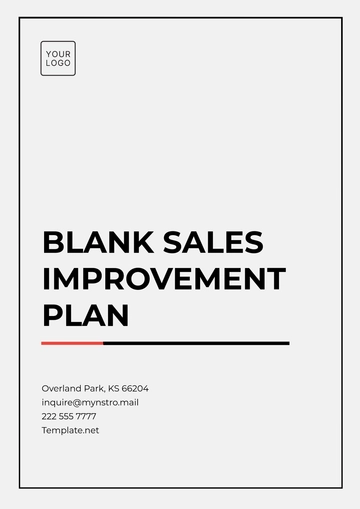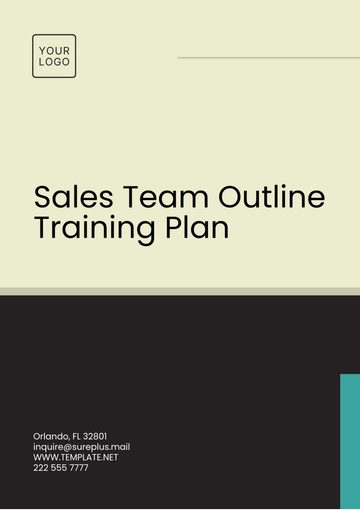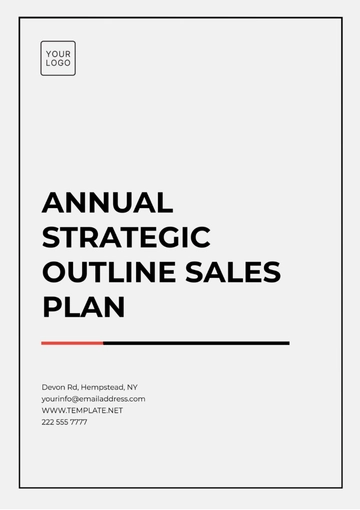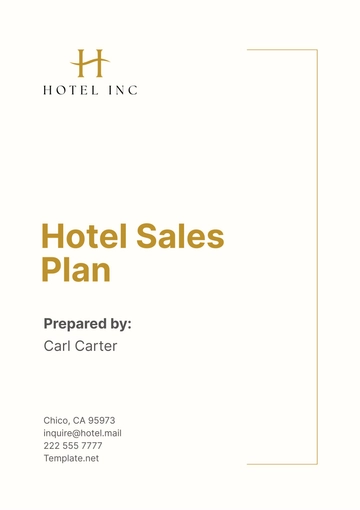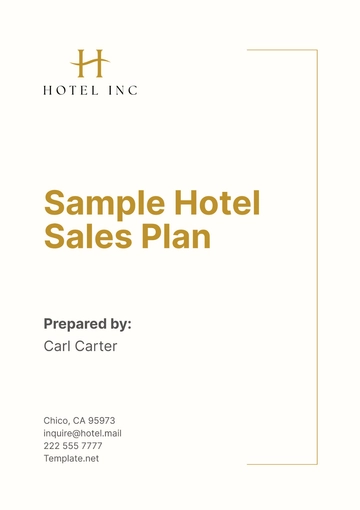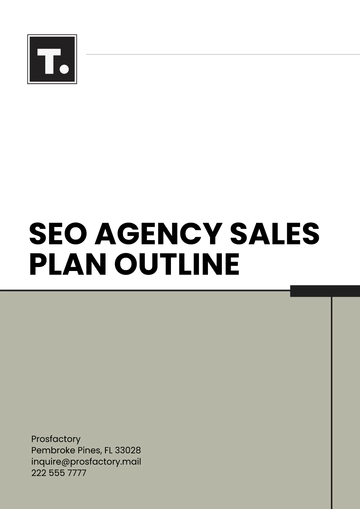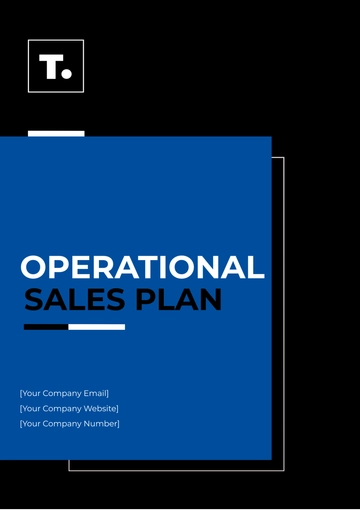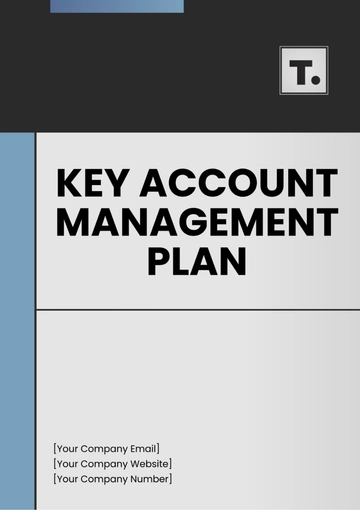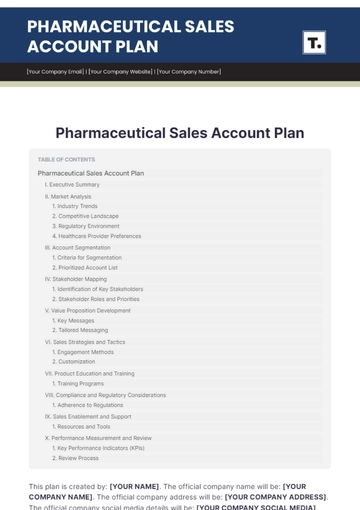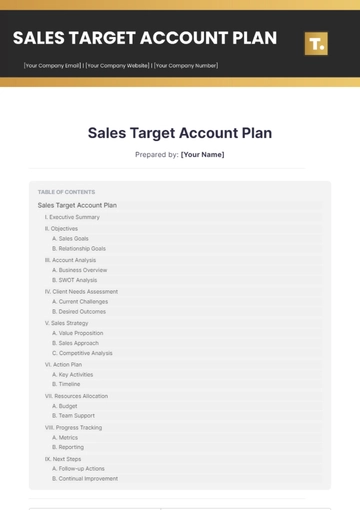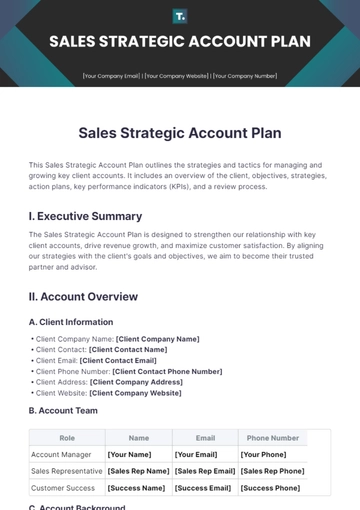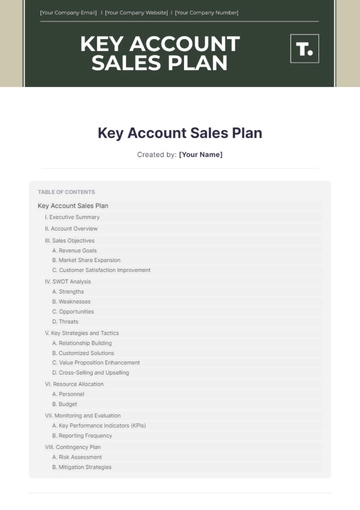Free Pharmaceutical Sales Account Plan
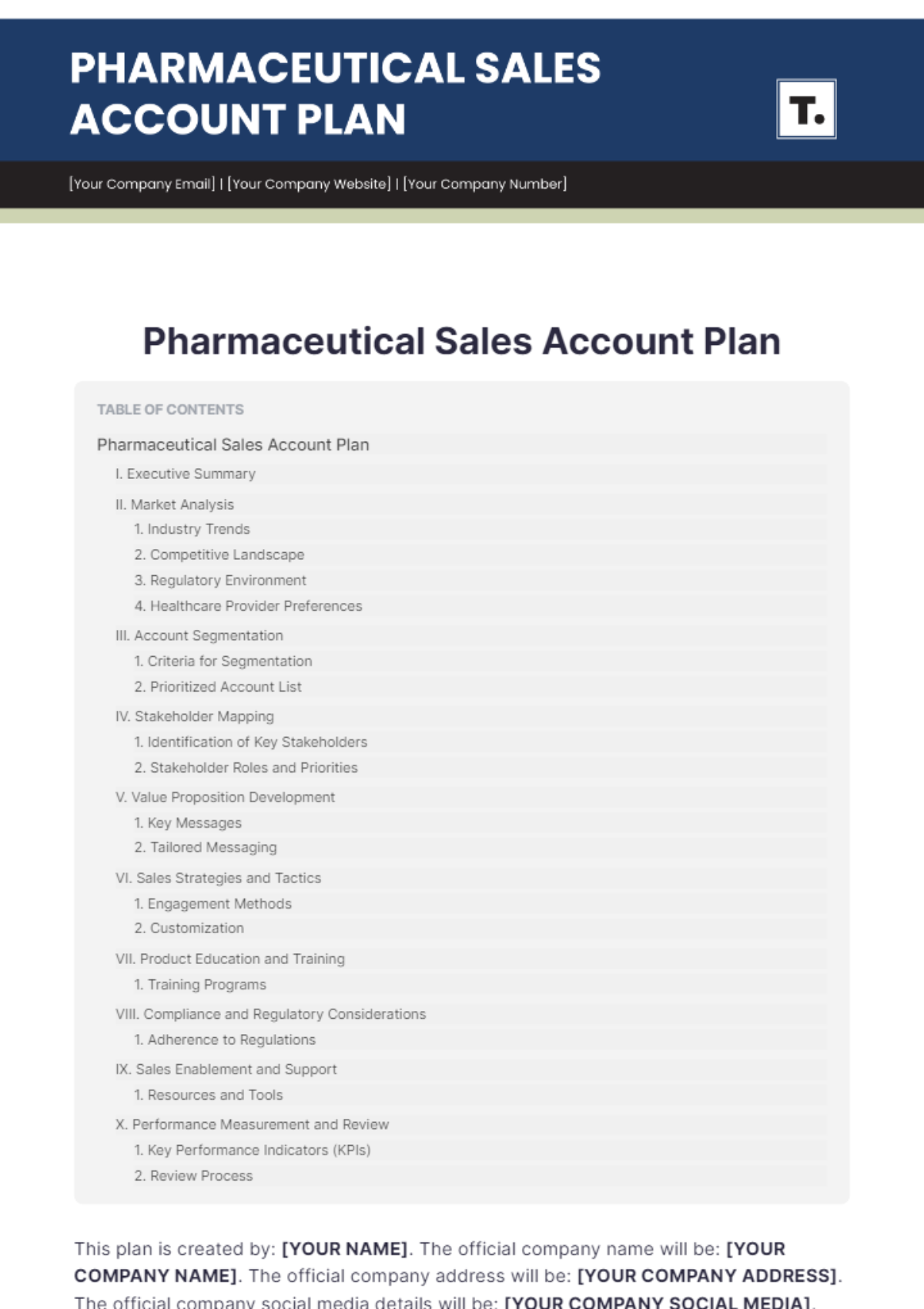
This plan is created by: [YOUR NAME]. The official company name will be: [YOUR COMPANY NAME]. The official company address will be: [YOUR COMPANY ADDRESS]. The official company social media details will be: [YOUR COMPANY SOCIAL MEDIA].
I. Executive Summary
[Your Company Name] is focused on enhancing the pharmaceutical sales process through a detailed and dynamic account plan that targets healthcare providers, pharmacies, hospitals, and other stakeholders in the industry. This plan outlines our strategic approach to market analysis, account segmentation, and stakeholder engagement to maximize our market presence and achieve sustainable growth.
II. Market Analysis
1. Industry Trends
Overview of current pharmaceutical industry trends.
Key therapies gaining prevalence.
Technological advances impacting the sector.
2. Competitive Landscape
Major competitors and their market position.
Strengths and weaknesses of key competitors.
Benchmarking [Your Company Name] against competitor activities.
3. Regulatory Environment
Current regulations affecting pharmaceutical sales.
Potential policy changes and their implications.
4. Healthcare Provider Preferences
Preferred communication channels.
Primary concerns of healthcare providers.
Factors influencing prescribing behavior.
III. Account Segmentation
Segmenting target accounts is critical to effectively allocate resources and tailor marketing efforts.
1. Criteria for Segmentation
Account size and growth potential.
Geographic location and market reach.
Therapeutic focus areas.
Relationship history and engagement level.
2. Prioritized Account List
[Account Name 1]
Size: Large
Geographic Location: National
Therapeutic Focus: Oncology
[Account Name 2]
Size: Medium
Geographic Location: Regional
Therapeutic Focus: Cardiology
IV. Stakeholder Mapping
1. Identification of Key Stakeholders
Physicians
Pharmacists
Hospital Administrators
Formulary Committees
Payer Organizations
2. Stakeholder Roles and Priorities
Stakeholder | Role | Priorities | Communication Preferences |
|---|---|---|---|
Physicians | Prescriber | Patient outcomes, clinical data | In-person meetings, medical journals |
Pharmacists | Medication Dispenser | Safety, efficacy, cost | Webinars, email updates |
V. Value Proposition Development
1. Key Messages
Clinical efficacy and safety profile.
Cost-effectiveness and reimbursement support.
Patient benefits and outcomes.
2. Tailored Messaging
Craft messages that resonate with each target account and stakeholder group, aligning with their specific needs and priorities.
VI. Sales Strategies and Tactics
1. Engagement Methods
In-person detailing.
Virtual meetings and consultations.
Educational seminars and workshops.
Peer-to-peer discussions.
Sponsored events and conferences.
2. Customization
Customize engagement tactics based on account segmentation and stakeholder preferences.
VII. Product Education and Training
1. Training Programs
Comprehensive product training for sales representatives.
Continuous education on new developments and trends.
Role-playing and scenario analysis for real-world application.
VIII. Compliance and Regulatory Considerations
1. Adherence to Regulations
Ensure compliance with industry standards and regulations.
Maintain ethical and transparent sales practices.
Focus on patient safety and privacy.
IX. Sales Enablement and Support
1. Resources and Tools
Sales collateral and promotional materials.
Product samples and clinical data.
Reimbursement support.
Access to medical experts and scientific resources.
X. Performance Measurement and Review
1. Key Performance Indicators (KPIs)
Sales revenue and growth rates.
Prescription volume and market share.
Customer satisfaction and feedback.
Return on Investment (ROI).
2. Review Process
Regular performance reviews and assessments.
Identification of areas for improvement.
Adjustments to the sales plan based on performance data.
- 100% Customizable, free editor
- Access 1 Million+ Templates, photo’s & graphics
- Download or share as a template
- Click and replace photos, graphics, text, backgrounds
- Resize, crop, AI write & more
- Access advanced editor
Introducing the Pharmaceutical Sales Account Plan Template from Template.net! This editable and customizable tool revolutionizes sales strategies. Craft tailored plans effortlessly, adapting to diverse markets and clients. Seamlessly editable in our Ai Editor, it ensures precision and efficiency. Elevate your sales game today with this dynamic resource.
You may also like
- Finance Plan
- Construction Plan
- Sales Plan
- Development Plan
- Career Plan
- Budget Plan
- HR Plan
- Education Plan
- Transition Plan
- Work Plan
- Training Plan
- Communication Plan
- Operation Plan
- Health And Safety Plan
- Strategy Plan
- Professional Development Plan
- Advertising Plan
- Risk Management Plan
- Restaurant Plan
- School Plan
- Nursing Home Patient Care Plan
- Nursing Care Plan
- Plan Event
- Startup Plan
- Social Media Plan
- Staffing Plan
- Annual Plan
- Content Plan
- Payment Plan
- Implementation Plan
- Hotel Plan
- Workout Plan
- Accounting Plan
- Campaign Plan
- Essay Plan
- 30 60 90 Day Plan
- Research Plan
- Recruitment Plan
- 90 Day Plan
- Quarterly Plan
- Emergency Plan
- 5 Year Plan
- Gym Plan
- Personal Plan
- IT and Software Plan
- Treatment Plan
- Real Estate Plan
- Law Firm Plan
- Healthcare Plan
- Improvement Plan
- Media Plan
- 5 Year Business Plan
- Learning Plan
- Marketing Campaign Plan
- Travel Agency Plan
- Cleaning Services Plan
- Interior Design Plan
- Performance Plan
- PR Plan
- Birth Plan
- Life Plan
- SEO Plan
- Disaster Recovery Plan
- Continuity Plan
- Launch Plan
- Legal Plan
- Behavior Plan
- Performance Improvement Plan
- Salon Plan
- Security Plan
- Security Management Plan
- Employee Development Plan
- Quality Plan
- Service Improvement Plan
- Growth Plan
- Incident Response Plan
- Basketball Plan
- Emergency Action Plan
- Product Launch Plan
- Spa Plan
- Employee Training Plan
- Data Analysis Plan
- Employee Action Plan
- Territory Plan
- Audit Plan
- Classroom Plan
- Activity Plan
- Parenting Plan
- Care Plan
- Project Execution Plan
- Exercise Plan
- Internship Plan
- Software Development Plan
- Continuous Improvement Plan
- Leave Plan
- 90 Day Sales Plan
- Advertising Agency Plan
- Employee Transition Plan
- Smart Action Plan
- Workplace Safety Plan
- Behavior Change Plan
- Contingency Plan
- Continuity of Operations Plan
- Health Plan
- Quality Control Plan
- Self Plan
- Sports Development Plan
- Change Management Plan
- Ecommerce Plan
- Personal Financial Plan
- Process Improvement Plan
- 30-60-90 Day Sales Plan
- Crisis Management Plan
- Engagement Plan
- Execution Plan
- Pandemic Plan
- Quality Assurance Plan
- Service Continuity Plan
- Agile Project Plan
- Fundraising Plan
- Job Transition Plan
- Asset Maintenance Plan
- Maintenance Plan
- Software Test Plan
- Staff Training and Development Plan
- 3 Year Plan
- Brand Activation Plan
- Release Plan
- Resource Plan
- Risk Mitigation Plan
- Teacher Plan
- 30 60 90 Day Plan for New Manager
- Food Safety Plan
- Food Truck Plan
- Hiring Plan
- Quality Management Plan
- Wellness Plan
- Behavior Intervention Plan
- Bonus Plan
- Investment Plan
- Maternity Leave Plan
- Pandemic Response Plan
- Succession Planning
- Coaching Plan
- Configuration Management Plan
- Remote Work Plan
- Self Care Plan
- Teaching Plan
- 100-Day Plan
- HACCP Plan
- Student Plan
- Sustainability Plan
- 30 60 90 Day Plan for Interview
- Access Plan
- Site Specific Safety Plan


